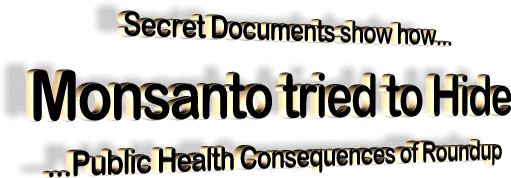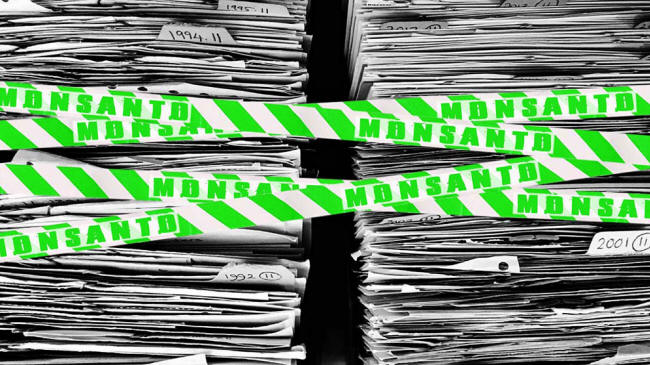|
A U.S. law firm has released secret documents providing disturbing evidence that agrochemical and biotech company Monsanto engaged in
...and other corporate misconduct.
Monsanto seemingly carried out these activities in an attempt to hide the serious public health consequences of its glyphosate-based herbicide Roundup.
With Monsanto's new owners Bayer recently suffering three landmark defeats in legal cases brought by patients who developed cancer after exposure to Roundup, the release of these latest documents will further strengthen the more than 18,400 additional lawsuits now outstanding against the company.
Published online by law firm Baum, Hedlund, Aristei & Goldman, the newly released documents form part of a growing collection known as 'The Monsanto Papers'.
Containing internal Monsanto emails, text messages, company reports, studies, and other key memoranda, the documents provide damning evidence of the extent to which Monsanto apparently sought to mislead regulators and the public regarding the supposed 'safety' of Roundup.
Ghostwriting and Hiding Scientific Evidence
The Monsanto Papers make clear that Monsanto ghostwrote articles that government regulators have been relying on for years.
A practice in which a person or company writes an article but is not publicly credited as its author, ghostwriting is known to be particularly widespread in the drug industry.
Documents unearthed by the law firm prove that Monsanto had ghostwritten pro-Roundup safety reviews for scientific journals.
The papers also show how Monsanto drafted letters for members of the U.S. Congress to send in an attempt to get the U.S. government to withdraw funding for IARC.
A World Health Organization body, IARC published an evaluation in 2015 in which it stated that,
This evaluation subsequently became a central argument in the cancer lawsuits against Monsanto.
Far from Monsanto being unaware that exposure to Roundup posed dangers to human health, the evidence shows the company hid its own consultant's conclusions that the herbicide causes damage to DNA.
It also hid data showing that Roundup penetrates skin at greater rates than had previously been reported to regulators.
Colluding with Media and Regulators
Providing evidence that Monsanto aimed to ensure the mainstream media wrote favorably about Roundup, the papers show the company was involved in several articles written by Reuters news agency reporter Kate Kelland.
Kelland's story helped give rise to the idea that IARC had supposedly ignored data which, if it were considered, would have changed the classification of glyphosate.
The Monsanto papers also show the company colluded with government regulators.
Monsanto also engaged in deliberate attempts to discredit its critics.
One person who was the focus of such attention was French scientist Gilles-Eric Séralini.
In September 2012 Séralini had published a study (Long Term Toxicity of a Roundup Herbicide and a Roundup-Tolerant Genetically Modified Maize) in the Food and Chemical Toxicology journal which showed that rats fed genetically modified glyphosate-resistant corn have an increased incidence of tumors.
Monsanto responded to the release of this study by devising a plan to undermine and discredit Séralini. Under mounting pressure, the journal subsequently retracted the study in November 2013 and stated that Séralini's findings were unreliable.
Notably, therefore, papers uncovered by the law firm show that Wallace Hayes, the journal's editor-in-chief, once had a contractual relationship with Monsanto.
Bayer's Future at Threat
As the Monsanto papers demonstrate, the $63 billion that Bayer paid for the agrochemical and biotech company in 2018 have cost it dearly in more ways than one.
With its share price having plummeted and even the Wall Street Journal now describing the Monsanto deal as one of the worst in recent memory, Bayer's future is clearly at threat.
While it remains far from certain how this situation will ultimately play out, one thing is already clear in that,
For the time being therefore, with more than 18,400 Roundup cancer lawsuits filed against the company, Bayer's board members and investors will continue to sleep nervously in their beds...
|




